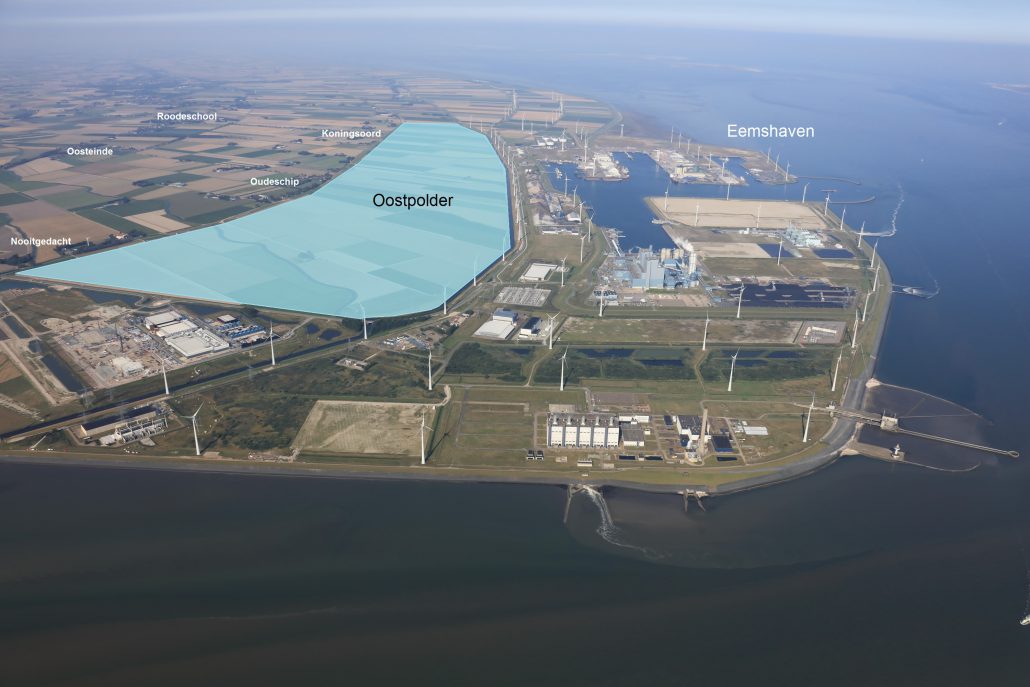Energy transition and market opportunities call for expansion of Eemshaven
Energy transition and market opportunities call for expansion of Eemshaven

Groningen Seaports wholeheartedly supports the plans of the Province of Groningen and the Municipality of Het Hogeland to expand Eemshaven and to start work on the development of Oostpolder, an area of approximately 600 hectares. There is space for an industrial site Oostpolder, which will be carefully incorporated using green buffer zones. This site is first and foremost intended for companies needing at least 50 hectares of space.
Favourable economic effects
The development of an industrial site in Oostpolder is an important condition for seizing the opportunities to strengthen Northeast Groningen’s economy. “Expansion creates more space for market demand because we are currently contending with a scarcity of land in Eemshaven. We are barely able to offer any adjoined plots in Eemshaven, or even in Delfzijl. This expansion in Oostpolder will facilitate the arrival of companies that need a lot of space. And this will of course create jobs,” says Groningen Seaports CEO Cas König.
According to König, there is growing demand for large plots from companies wishing to establish themselves here. “This includes companies in the hydrogen economy, such as electrolysis firms, but also battery plants, data centres, companies in the automotive industry and new forms of high-tech companies. The arrival of these companies will offer us a range of employment and innovation opportunities that are bound to have favourable economic effects in the region.”
Sustainable power hub
Eemshaven and Oostpolder also present opportunities to become the ultimate sustainable power hub in the Netherlands. “We are already the electricity roundabout of the Netherlands, of course we want to grow the production of clean energy. As well as creating jobs, the development contributes to the greening of the chemical industry and thus helping the energy transition. Groningen has traditionally been the energy province of the Netherlands, and we want it to stay that way. The Netherlands is ready for clean and sustainable energy, in which Eemshaven plays an important role”, says König.
The Oostpolder planning area links up with the existing Eemshaven industrial site on the northern side and is further bordered by the railway line (western side), Oudeschip (southern side) and the N33 (eastern side). König: “But that is not to say that everything will be buildable area. Space is also needed for access roads, cables and pipes, green buffers, open water and wind turbines. We need to take into account the quality of life and welfare of the inhabitants of neighbouring towns and villages, because an industrial site has an impact on their immediate living environment.”
Master plan Oostpolder
The various discussion forums organised by the Province and the Municipality of Het Hogeland are intended to lead to a smart combination of economic development and quality of life, nature, recreation and sustainability. The Province of Groningen and the Municipality of Het Hogeland will begin working on a master plan for the Oostpolder in May. This document will contain the details of various aspects such as starting points, a map of the industrial site, the design of buffer zones around the residential areas and the financial calculation. Once the master plan is ready, it will form the basis for additional environmental studies and planning procedures.

The development of an industrial site in Oostpolder (photo: Groningen Seaports/Koos Boertjens)

